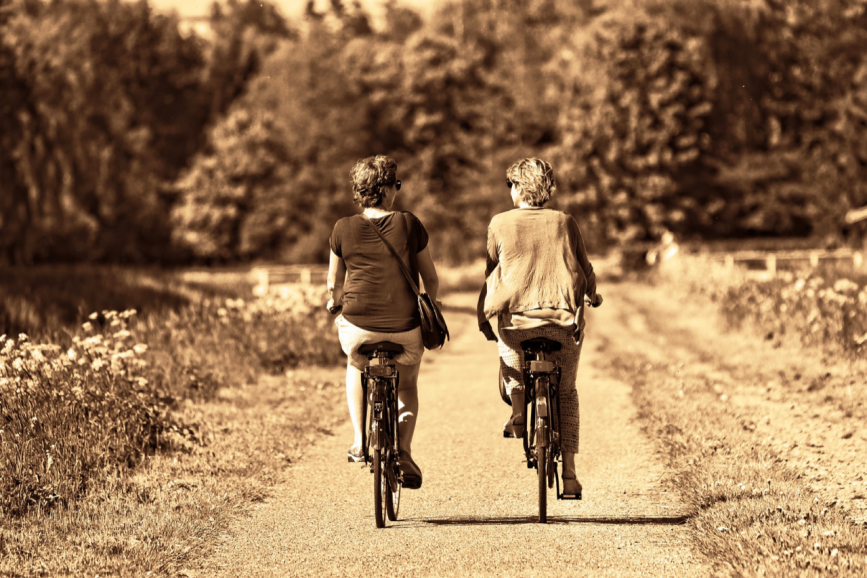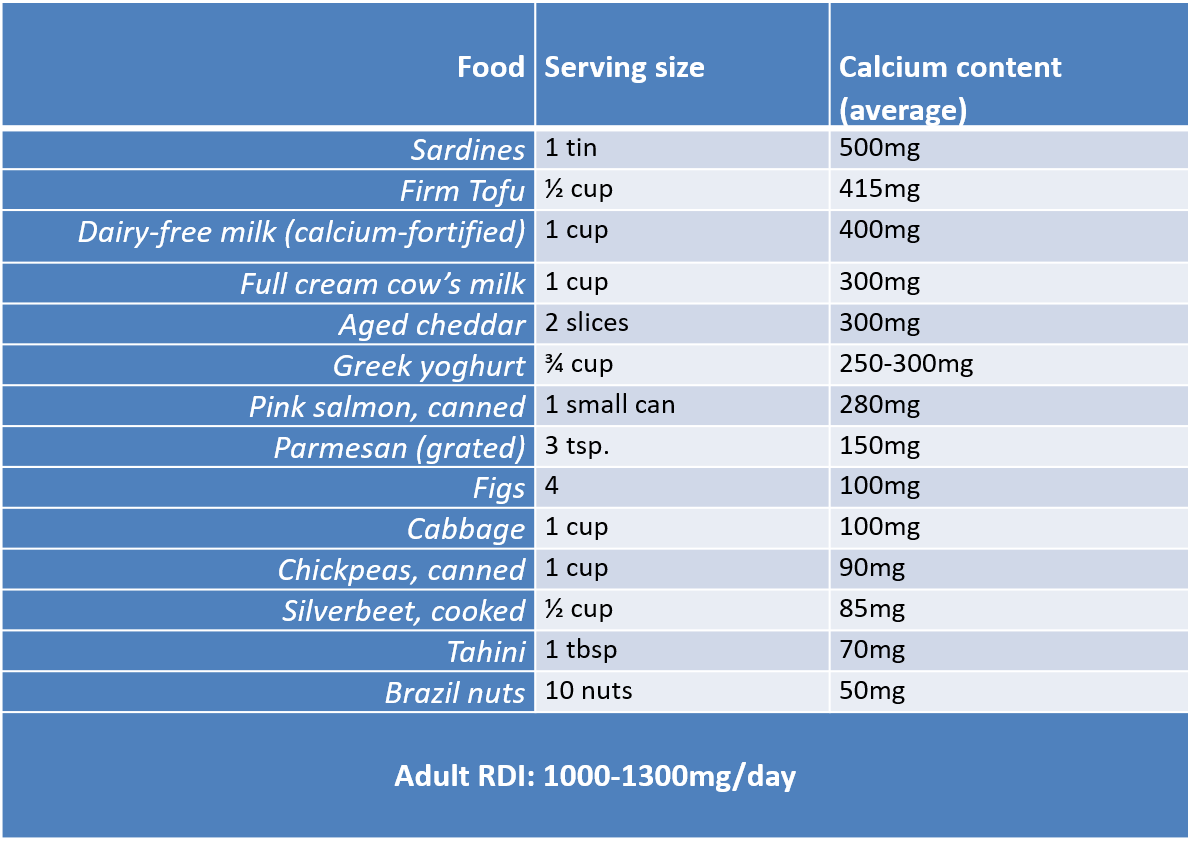
Each and every one of us should know how to protect and support the structure that literally supports us.
 Our bones tend to grow at a pretty rapid rate until about the age of 30-35 years, at which point they have reached their maximum strength and density (or peak bone mass). After this, we tend to lose bone tissue at a faster rate than we make it.
Our bones tend to grow at a pretty rapid rate until about the age of 30-35 years, at which point they have reached their maximum strength and density (or peak bone mass). After this, we tend to lose bone tissue at a faster rate than we make it.
Osteoporosis is essentially when your bones become brittle and “holey”. Over 1 million Aussies have been diagnosed with osteoporosis, and a further 6.3 million have low bone density (osteopenia). Osteoporosis is often called the ‘silent disease’, because sadly there are usually no symptoms until a fracture occurs.
As well as an increased risk of fractures, a diagnosis of osteoporosis can lead to anxiety, depression, and a loss of self-esteem (1). For some however, a diagnosis can be empowering and be a catalyst for positive dietary and lifestyle changes, especially if made in the osteopenic stages.
If there’s one thing you remember from reading this post, make it this: Bone health isn’t just an “old person’s issue”, it’s an “everyone who has a skeleton’s issue”!
Think beyond calcium.
Calcium is the most abundant mineral in the body, with 99% of it being stored in the teeth and bones. The daily requirement for calcium is huge, higher than any other mineral. It’s 1,000mg/day for those under 50 years and 1,300mg/day if over 50 years. Most Australians fall short at around 800mg/day (if they’re lucky!).
The chart below lists the Calcium content of both dairy-containing and dairy-free foods (for you to assess your own intake):

Please remember though, although calcium is important, on it’s own, it’s not enough to build a strong skeleton. The bones are hungry and require a range of nutrients to be strong and resilient. Beyond calcium, some of the standouts are magnesium, protein, vitamin D, vitamin K2, boron and phosphorus.
Let’s consider the role of just one of these, Magnesium, more closely.
The Calcium: Magnesium ratio is one of the most important mineral ratios in plants and soil, and so is true for humans.
Bones store approximately 60% of total body magnesium, with research showing that dietary magnesium intake can lead to a 27% decrease in fracture risk (2). Magnesium deficiency contributes to osteoporosis directly by acting on crystal formation and on bone cells and indirectly by impacting on the secretion and the activity of parathyroid hormone and by promoting low grade inflammation (3).
Magnesium also regulates BOTH calcium and vitamin D levels in the body, so magnesium adequacy must always be a priority if we are to have optimal regulation and actions of both calcium and vitamin D.
A word on calcium supplements.
The jury is in, calcium through FOOD trumps calcium through supplements. I would advise that if you’re considering calcium supplementation, consult with a nutrition professional (who will take into consideration diet, medication use, medical history, age and sex to determine what dosage and form might be best for you).
Synergistic nutrients such as vitamin K2, magnesium and vitamin D may be recommended alongside supplemental calcium; and there are instances when calcium supplementation is simply not appropriate (such increased cardiovascular disease risk, urinary stones, renal impairment and certain gastrointestinal disorders).
Does a blood test for Calcium tell us much about our bone health?
Serum calcium (on a routine blood test) is not so much a reflection of diet, but more a reflection of how well you regulate the very small fraction of calcium that resides in the blood (over 99% of Calcium is in bones and teeth!).
This is not to say it’s not useful to monitor, but rather to consider serum calcium alongside a range of other markers which can be assessed which provide a great deal of insight into bone health. And of course, if there is a strong family history or personal history of low bone density, you have any of the conditions listed here, please ask your GP for a referral for a bone mineral density scan.
Be Aware of Bone Robbers.
There are many things which can rob the bones of their nutritional building blocks. These include acidic foods and drinks like soft drink, added sugars, an over-consumption of caffeine and alcohol. Smoking is also an extraordinarily strong risk factor for development of osteoporosis.
Unfortunately, no amount of Caltate will overcome the damage potentially caused by these detrimental lifestyle factors.
Be Mindful of Meds.
Certain medications can also negatively impact bone health, via nutrient depletion and/or a range of other mechanisms. Bone loss which occurs from prolonged treatment with glucocorticoids for example, is referred to as ‘secondary osteoporosis’ (4), a very well-known and well-documented side effect of this medication.
Deficiencies of calcium, magnesium and vitamin D can occur with chronic use of certain commonly used medications (5). If you’re taking medication long-term, at ANY age, please be aware of any negative nutrient-drug interactions so these nutrients can, where possible, be closely monitored.
Why women need to be particularly proactive…
Women start losing bone at an earlier age and at a faster rate than men. Women ≥ 50 years of age have a four times higher rate of osteoporosis and a two times higher rate of osteopenia, and they tend to have fractures 5 – 10 years earlier compared with men (6).
This doesn’t mean blokes can get complacent. Men usually have fractures at a higher bone density, they tend to have a higher mortality risk after hip fracture, and compared to women, they are generally under-screened and under-treated.
Use it or lose it!
Although there are many drivers of osteoporosis (genetics, poor diet, certain medications, low oestrogen etc) and all need to be assessed and addressed, one of the very best things we can do for our bones is to stress them a little, by LIFTING HEAVY S**T.
The bones that are the strongest are the ones we put stress on, and our bones need strong muscles to support them.
Last year I realised I had to up my game (with a bit of reminding from my buddy and amazing PT Joy McClymont). So I started with 2kg weights, then moved onto a crow bar, then bricks, then 5kg weights, then 10kg bags of chook seed mix, and last weekend I was carrying around 25kg bags of organic feed for our pigs (yes, we got pigs! And yes, my husband sneakily took a photo of my doing some heavy lifting!)
I’m not going to win any prizes for my strength, which pales in comparison to so many others, but my bones will thank me.

If you need support with knowing where to start and to ensure you’re lifting properly, ask for help. There are many health professionals willing and able to help.
Bottom Line
The recommendations for strong bones (through the decades) are eerily similar to those recommended to reduce the risk of ALL chronic diseases. That is – eat enough of the good stuff, aim for nutrient dense food and dietary diversity, stay active and strong, don’t drink too much alcohol, don’t smoke and get outdoors.
If you have any questions, or need support, please reach out.
Until next time,
Stacey.